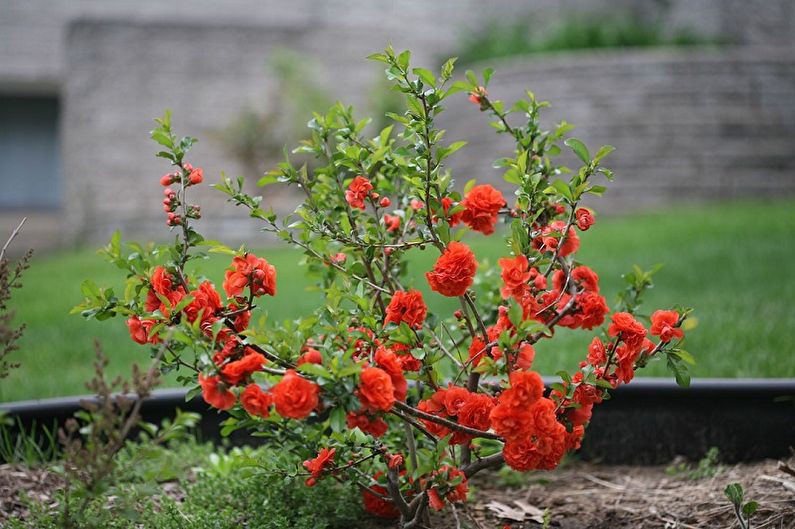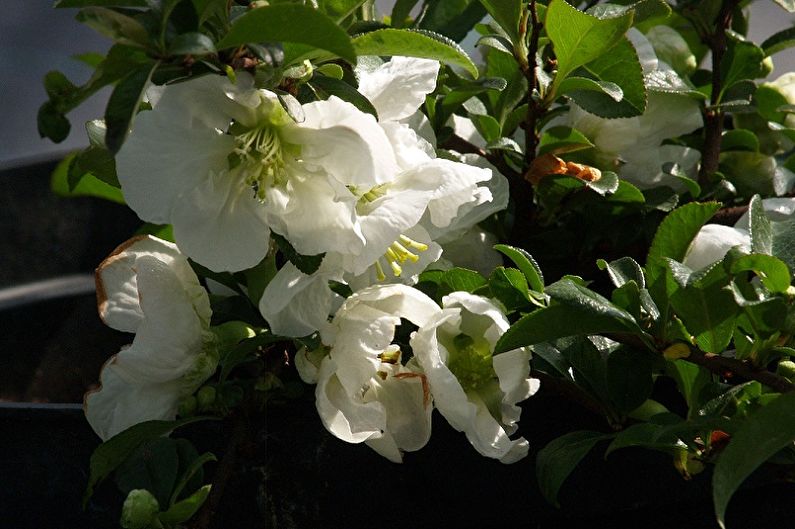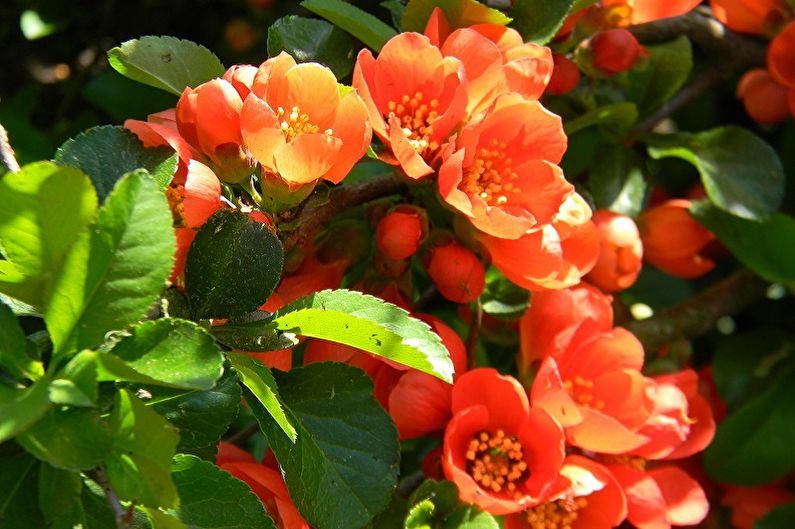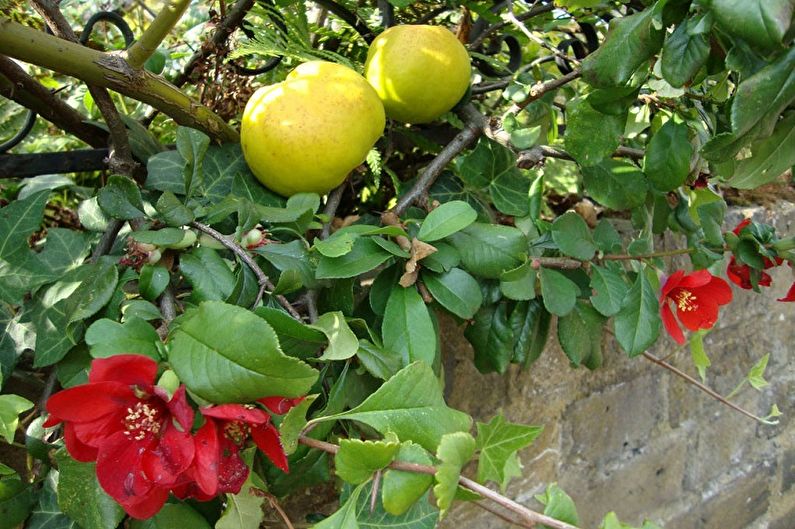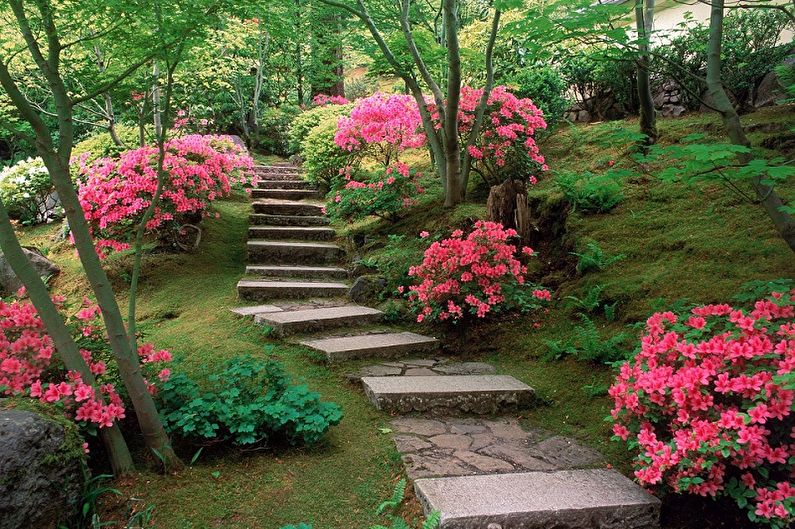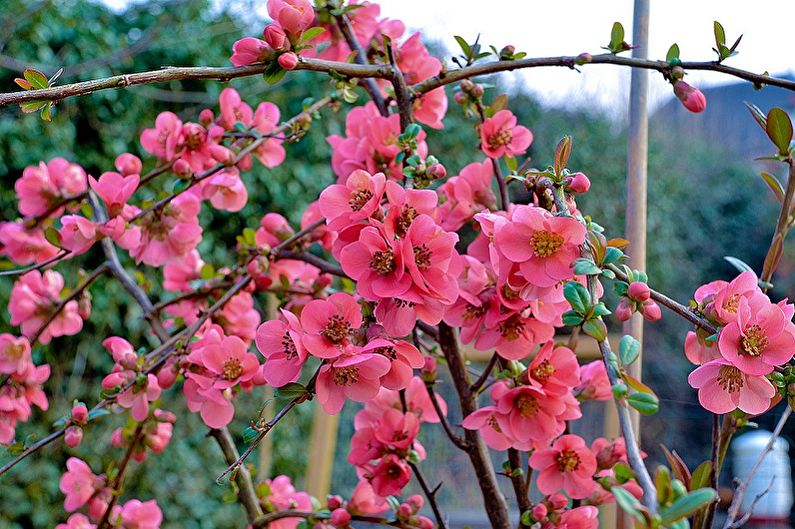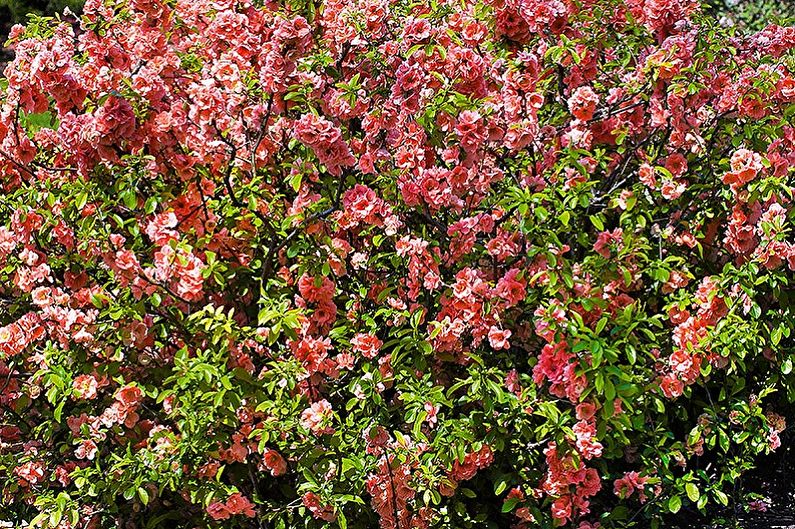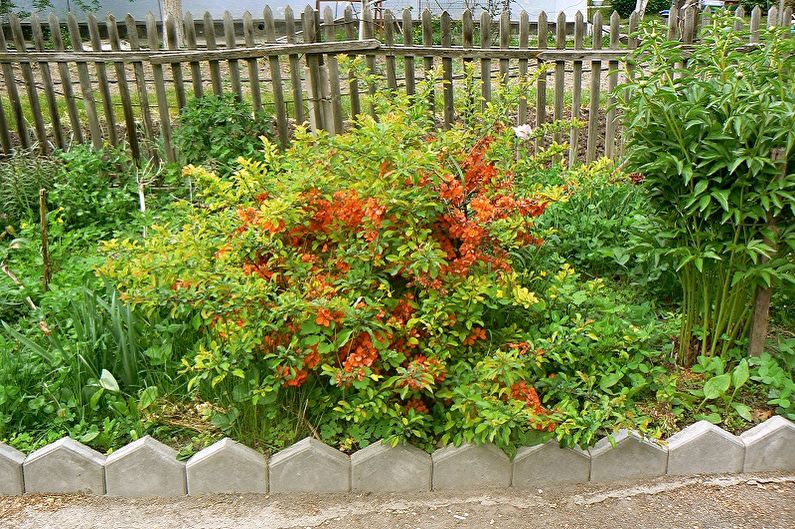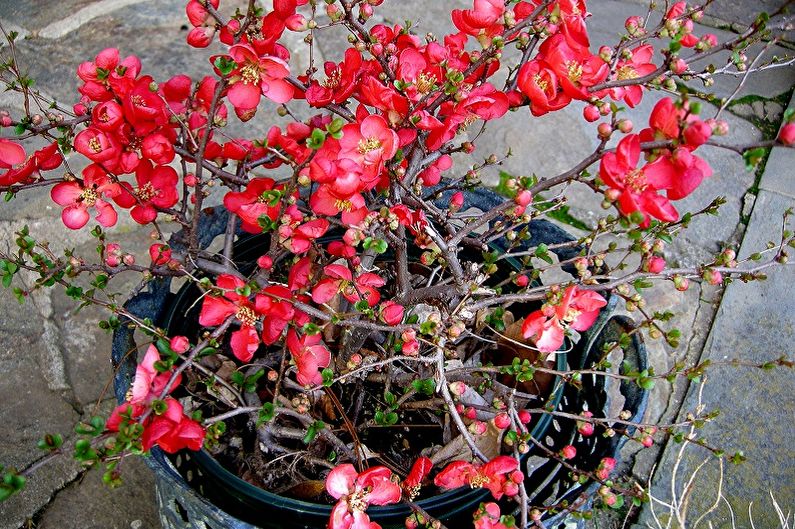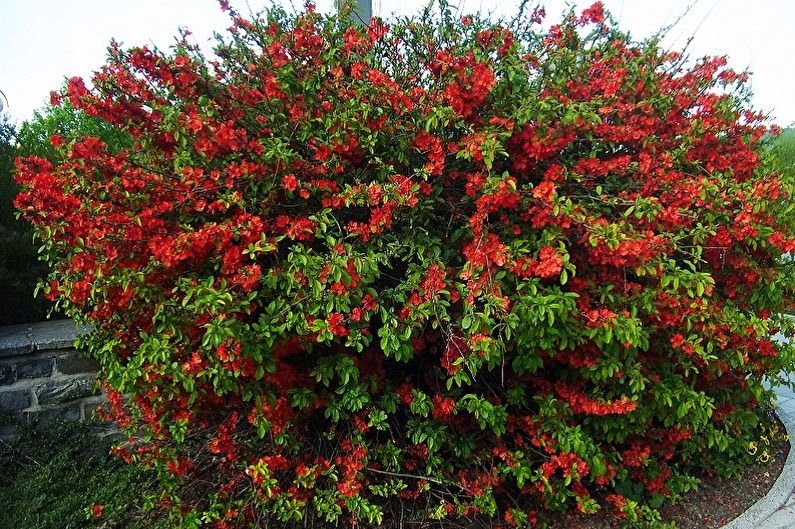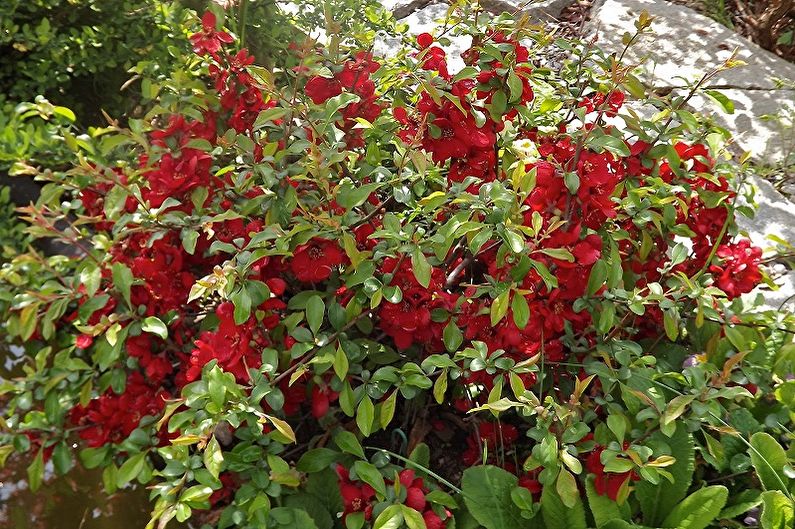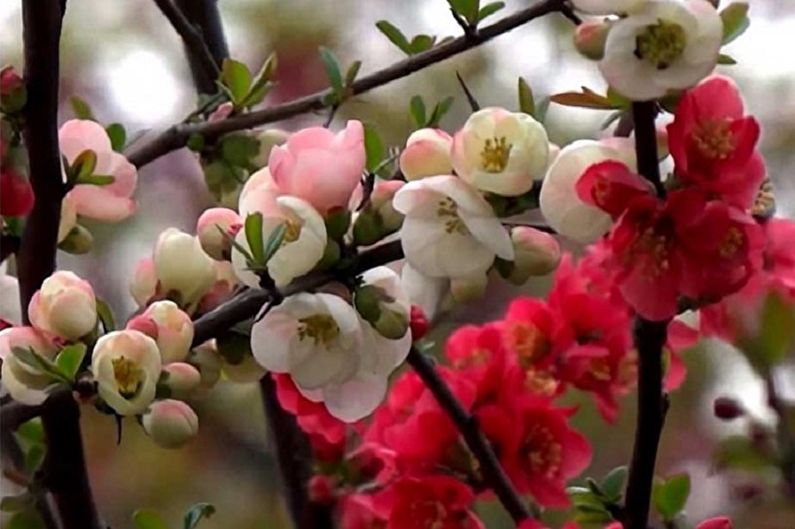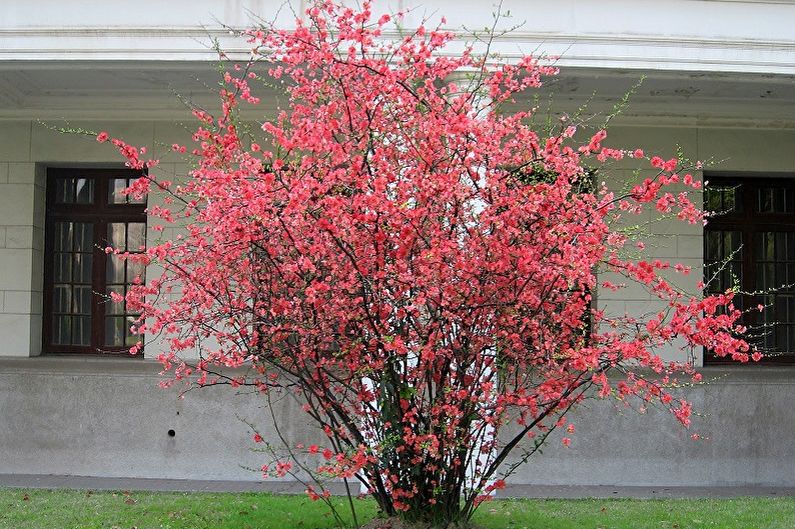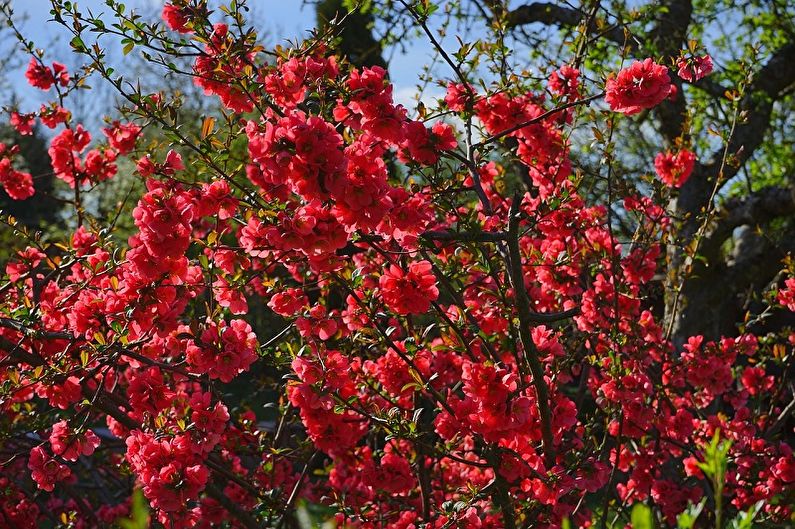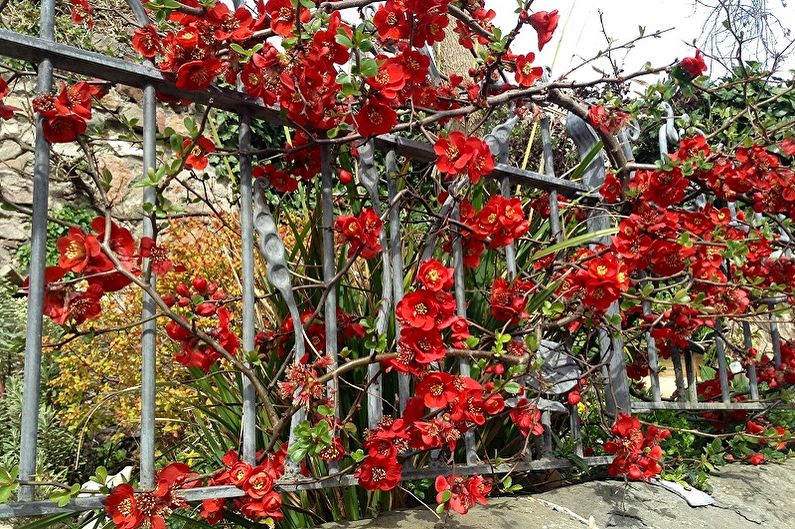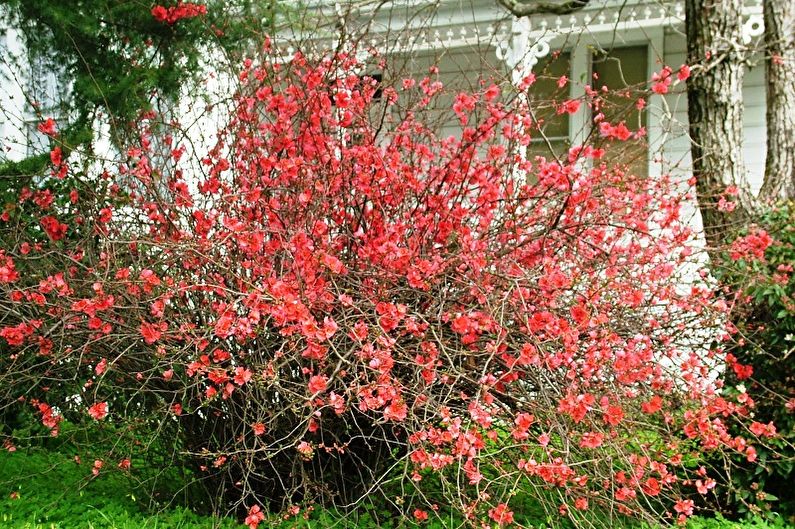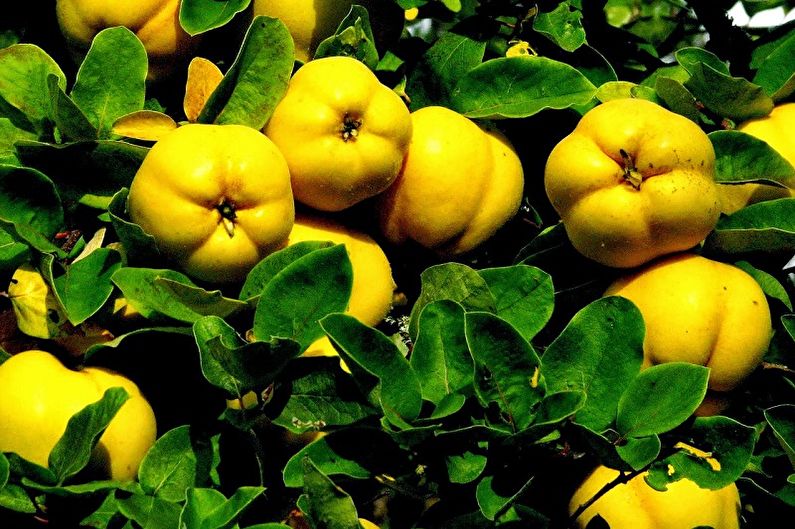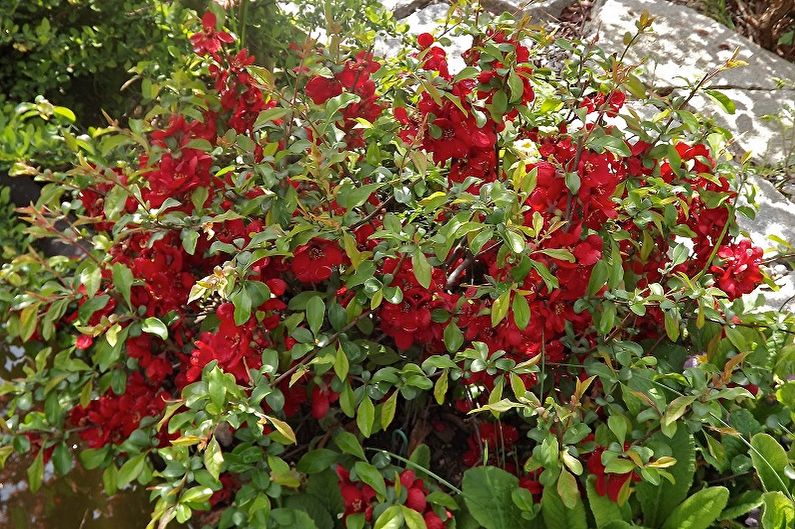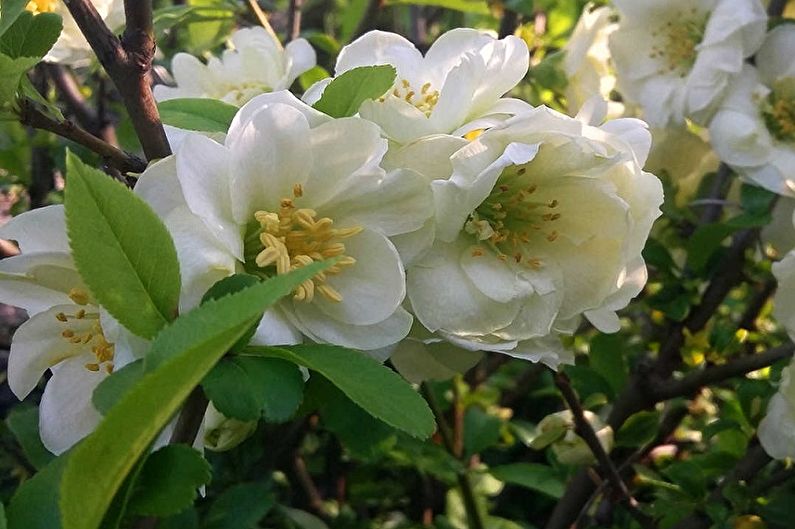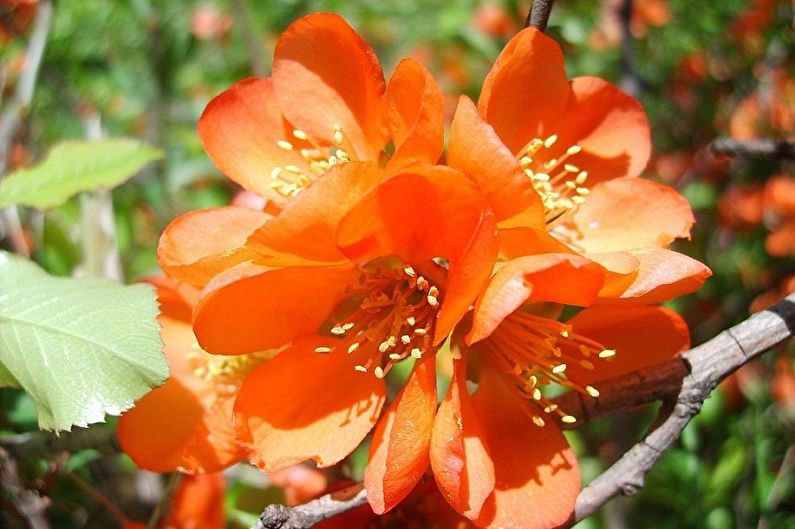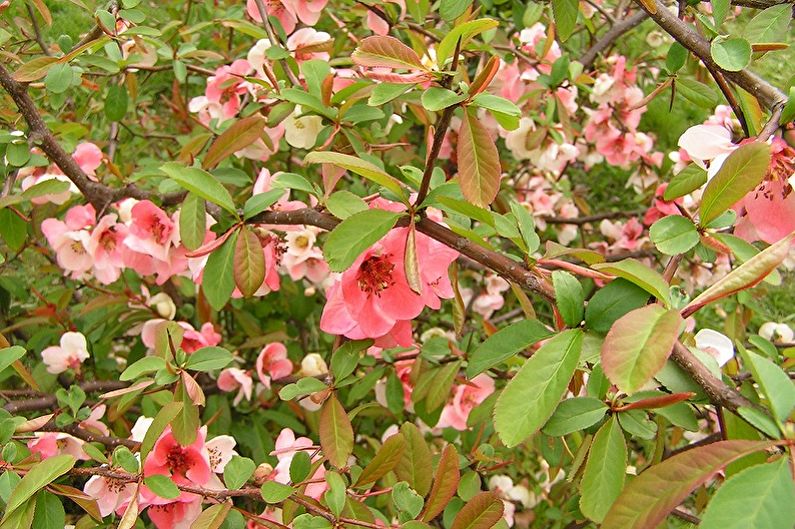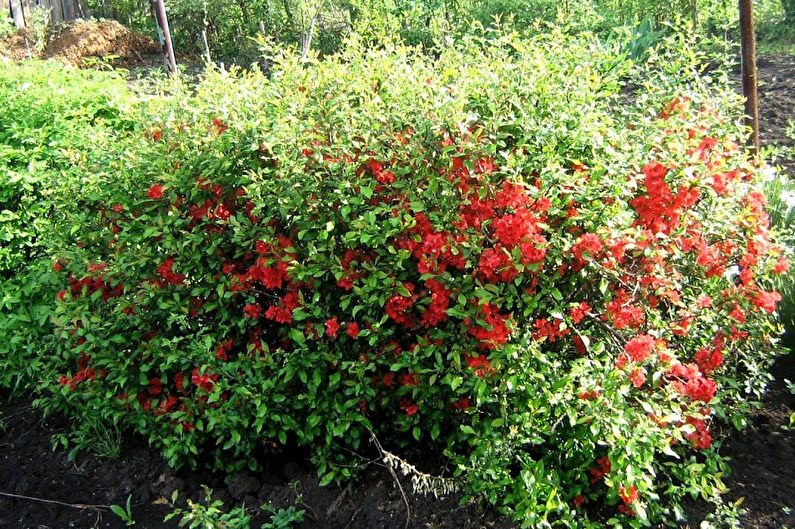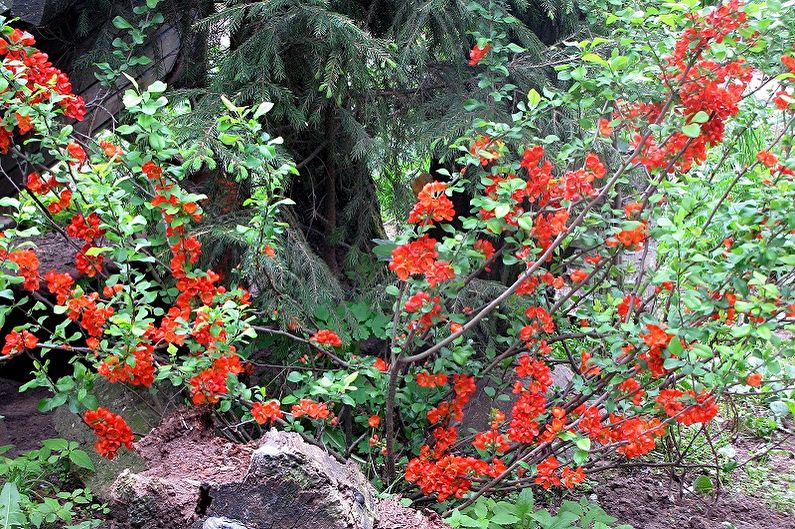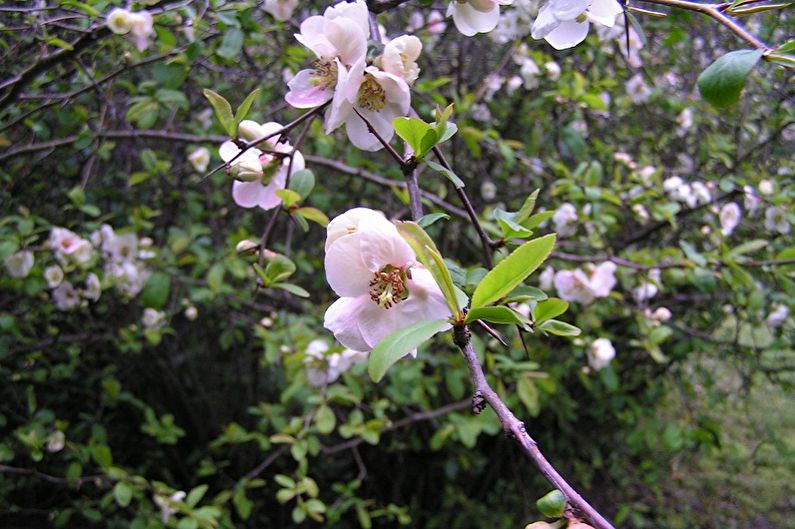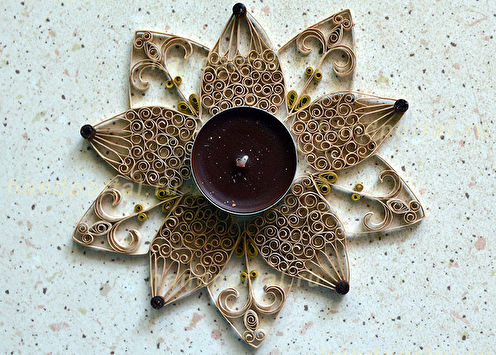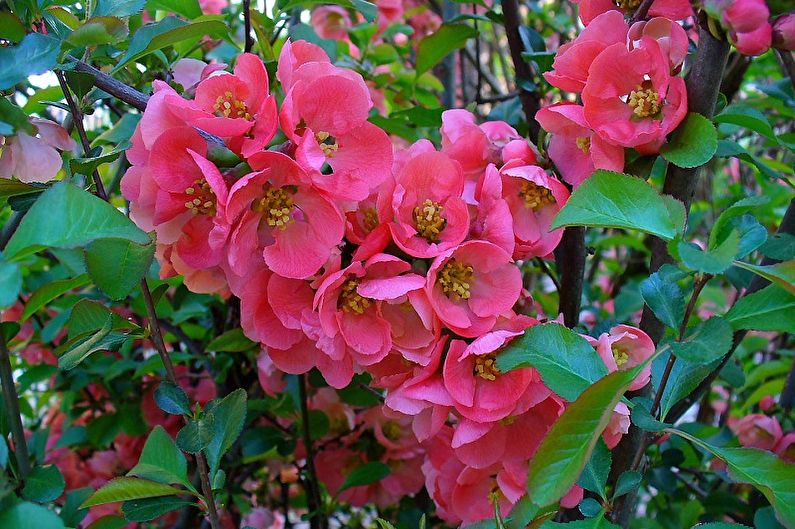
Japanese quince, or genomeles, is an exotic plant, mesmerizing with its beauty and aroma. Japan is considered the birthplace of culture, but in the wild it can also be found in China and Korea. Possessing high decorative characteristics, the plant is often used in landscaping to create hedges, lawn compositions with perennial flowers, borders. It is also worth noting the great benefits of its fruits ripening by mid-autumn. They contain a huge complex of vitamins and biologically active components, due to which they have medicinal properties, beneficially affecting the walls of blood vessels, reducing pressure and neutralizing viruses and fungi.
The main types
The genomeles species is represented by several main species and a number of hybrids, on the basis of which many varieties are created (about 500). They are separated according to various characteristics: by the size of shrubs and fruits, shape, color of buds, etc. However, not all of them can take root in our climatic conditions, so we will consider the main types and varieties that are popular.
Quince beautiful
This ornamental bush with spiny shoots, growing up to 3 m, has an interesting property of foliage to change its color. Initially green, over time they shimmer in red, and in the fall they turn purple. Flowering can be observed for about three weeks in the May period. The flowers are quite large, scarlet, beautifully cover the branches. Many varieties of this species have been bred, differing in simple and double flowers of different colors.
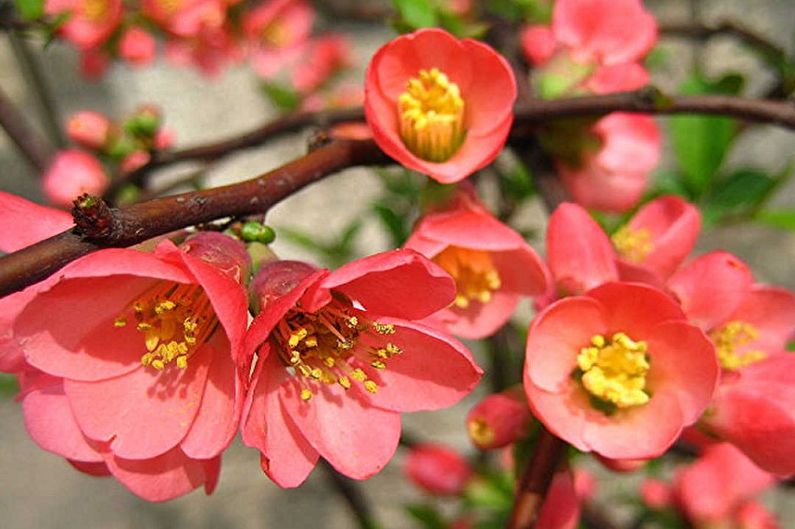
Quince maulea
This species is also called "quince low." The maximum height of this prickly deciduous shrub can reach 1.5 m. Young leaves have a reddish-bronze color, and then turn green. Bright, orange-red flowers bloom profusely in spring with large buds.

Henomeles (quince) Katayansky
Henomeles Katayansky is a rather large bush that grows up to 3 m over the years. Its spring purple foliage becomes brilliantly green by summer. Such quince blooms annually in May with dense pink or snow-white buds.
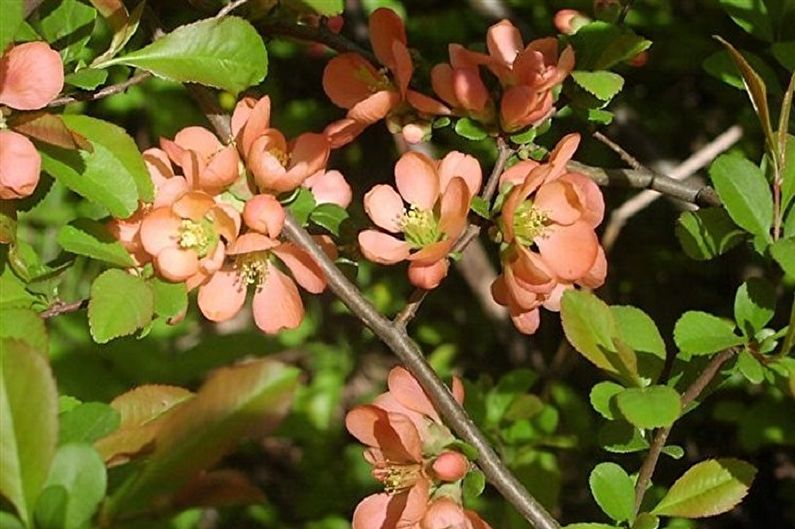
Zubutlinsky quince
This species can boast of its frost resistance and high immunity to various diseases, as well as rather large fruits, from which juices and preserves are prepared.
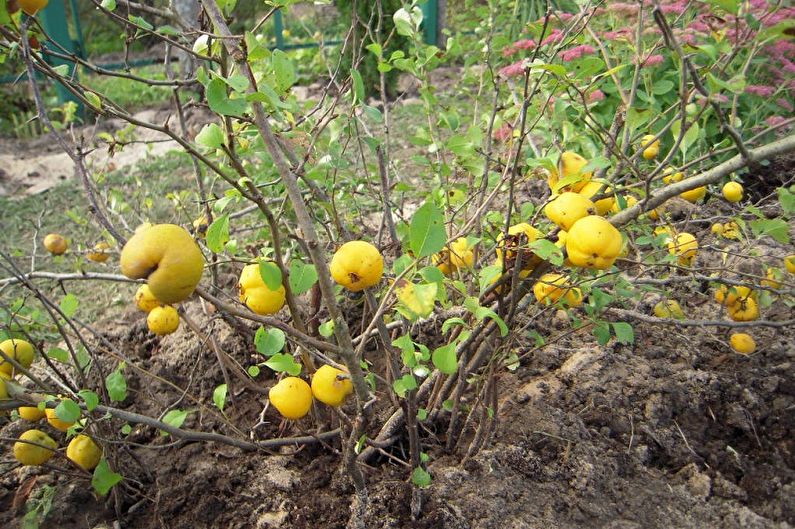
Lady pink
This quince grade is quite frost-resistant. His birth is the result of the careful work of breeders. This is a very spectacular ornamental shrub. Its originality lies in beautiful bright pink buds that have opened with delicate yellow stamens, which subsequently transform into fruits that look like apples. Lady Pink is often used by landscape designers to design decorative compositions.

Crimson and Gold
The variety is considered to be one of the most beautiful. It has beautiful decorative scarlet flowers with sunny yellow stamens. Most often, such beauty is planted by gardeners as living borders, since the bushes do not particularly grow and do not require pruning.
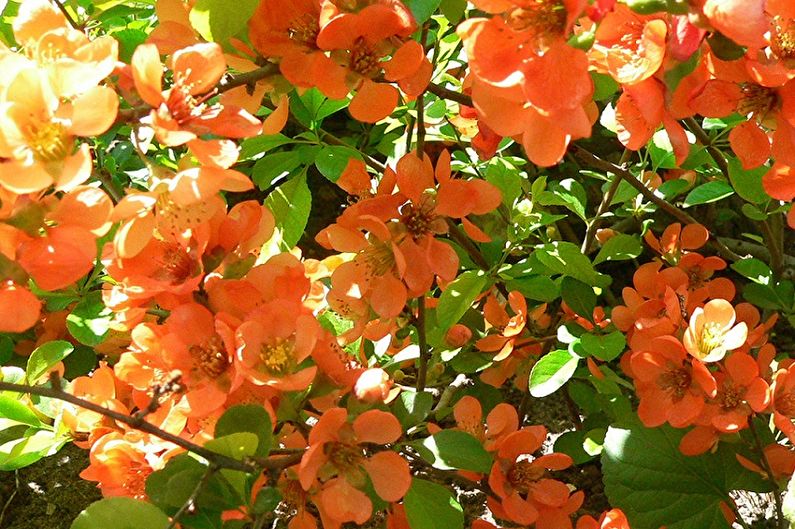
Proper care of Japanese quince
Cultivation is quite popular among gardeners due to the fact that it is completely unpretentious and does not require careful maintenance. Nevertheless, to quince for a long time delight with violent bright flowering, juicy fruits and not get sick, it is necessary to observe some rules.
Lighting
A plant native to the Land of the Rising Sun is quite photophilous. In gardens, quince must be planted in well-lit areas. If the terrain is hilly, it is better to choose the southern and southwestern slopes for planting.Its location in dark areas will certainly affect the splendor of flowering and fruiting. Culture is not afraid of direct directed rays of the sun, which greatly simplifies the choice of a place for planting.
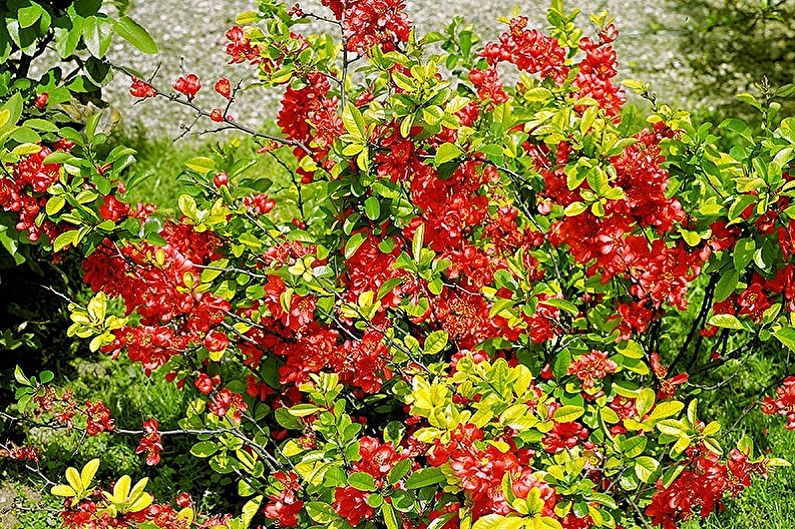

Temperature
No less than lighting, Japanese quince loves heat, therefore it develops especially well in areas with a mild climate. Although the plant is able to tolerate frosts, lowering the temperature to -25 ° C during the winter season can lead to freezing of flower buds and annual shoots that will not be covered with snow.
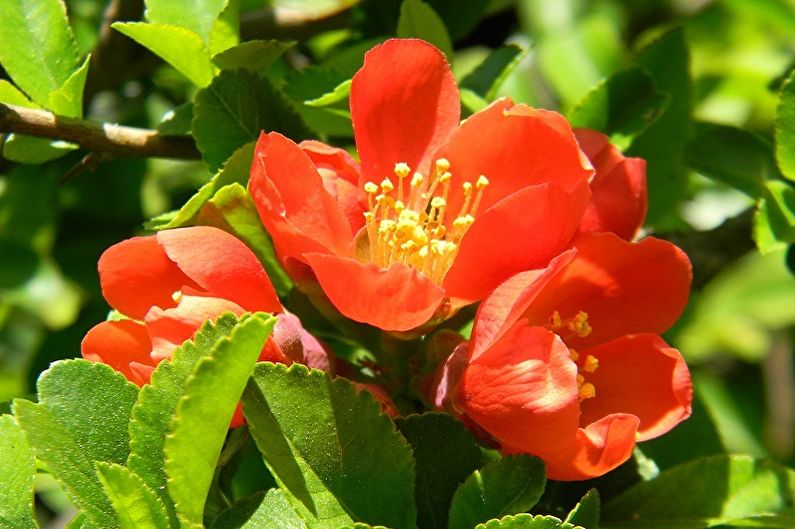
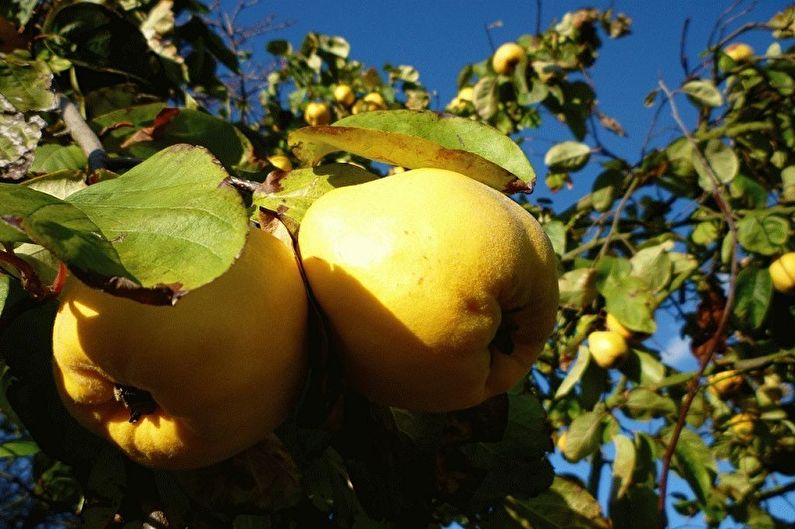
Humidity
Quince is a drought tolerant crop, but needs moderate humidity during growth and after transplantation. Stagnation of water in the soil should not be allowed, which will adversely affect the root system.
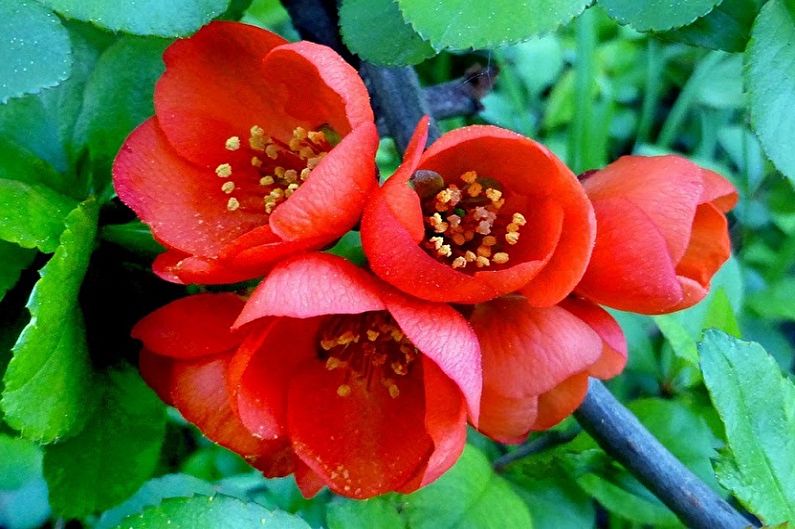

Watering
Japanese quince requires moderate watering, since its roots are quite long, able to reach depths in the soil of up to 5 meters and independently provide moisture to the bush. A more careful attitude to watering will be required for young plants - they need to drink once every two to three weeks. Adult plants are watered once every two months. Watering is especially necessary during the growing season, as well as fruit ovary. When the fruits ripen, watering stops.
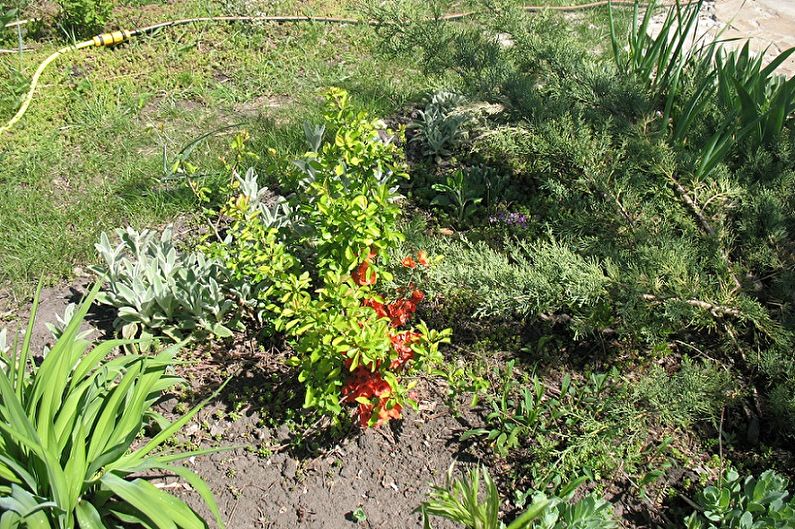
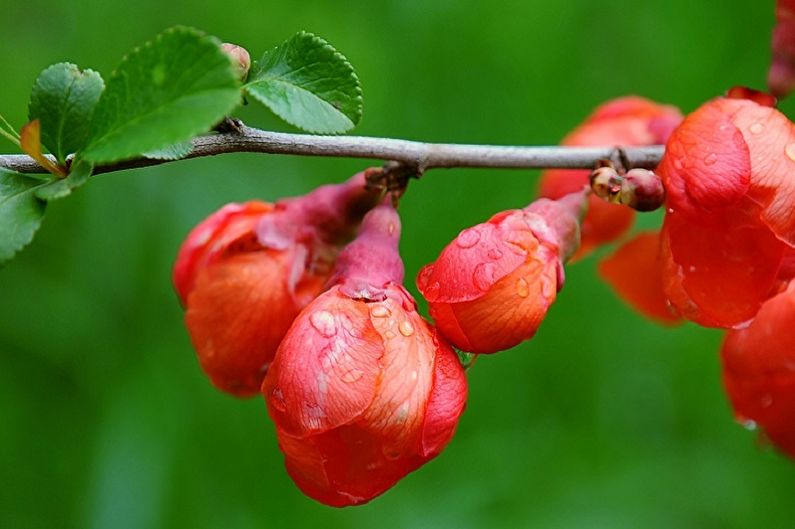
Fertilizers and fertilizing
Since when planting a plant in the ground enough nutrients are laid, the first year there is no need to make additional fertilizing. On the contrary, fertilizers can burn young roots, causing them significant damage. Mineral and organic additives are added to the second after planting. Topping up Japanese quince is carried out in early spring with compost, which is laid in the trunk tree (1 bucket is enough). Superphosphate and 100 g of potash fertilizers are also added. Throughout the summer, the plant is fed with liquid fertilizers, including bird droppings.
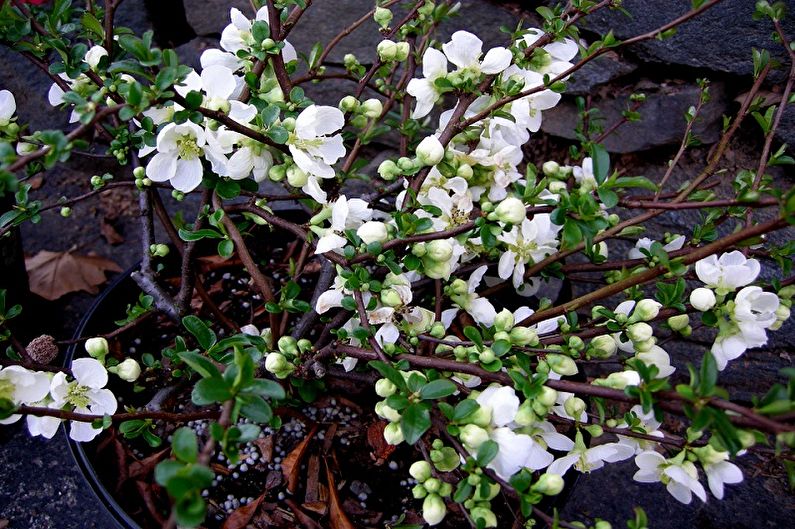
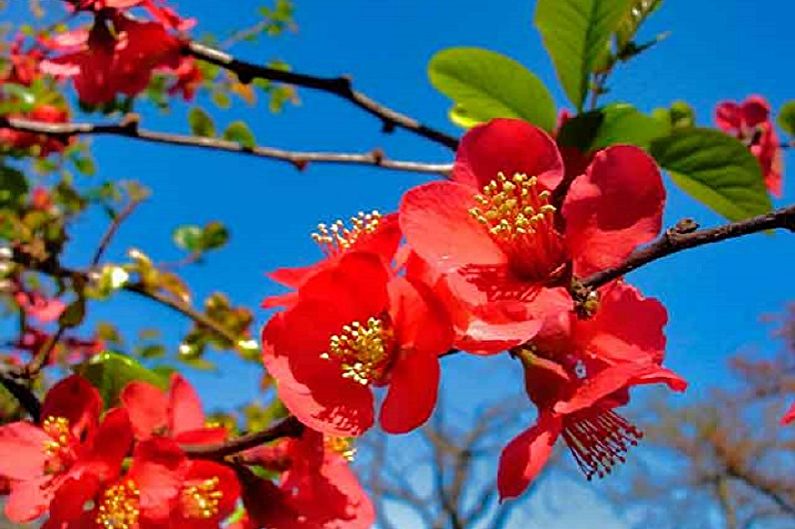
Diseases and Pests
Quince is ill quite rarely and in most cases, the disease responds well to treatment. Danger to plants are viral infections and various kinds of fungi, which are manifested by leaf spotting, deformation, dehydration and decay. In this case, the bushes must be treated with foundationazole or a self-prepared copper-soap liquid (10 l of liquid - 100 g of vitriol).
With the onset of spring, quince can be attacked by aphids or other pests that feed on its juice. For their destruction, chemical and lime treatment is used.

How to transplant Japanese quince
First of all, it is worth noting that the culture is quite difficult to tolerate the transplant, so without the need to disturb the bushes is not worth it. It is advisable at the initial landing in the ground to choose a permanent place on the south side of the site. In one place, the bush can grow up to half a century.
When replanting, which takes place in late spring, in addition to the correct choice of site, you need to take care of the soil. The area must be weeded, completely getting rid of weeds, add to the soil sheet soil, sand and peat compost.
Quince bushes can be placed singly, in the form of small groups, along the edges of garden paths. If group seating is assumed, the distance between plants should be at least 80 cm, and when placed in a row - at least half a meter. Newly planted shrubs must be abundantly watered and sprinkled with a three-centimeter layer of mulch.
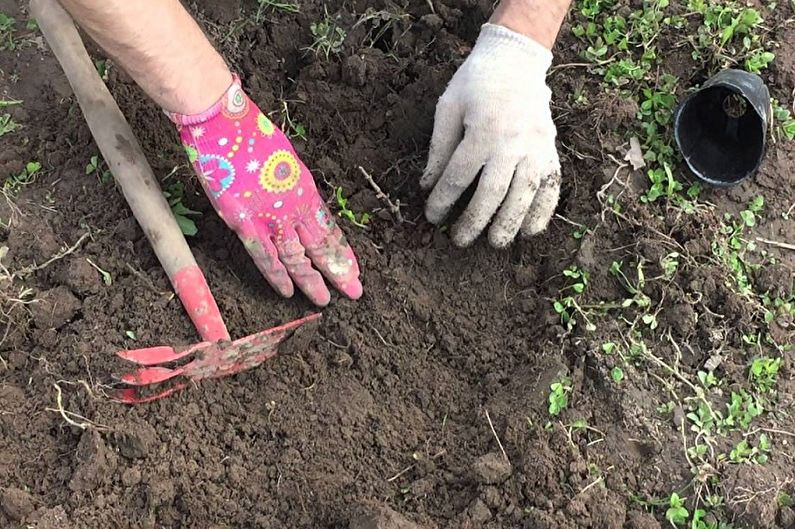
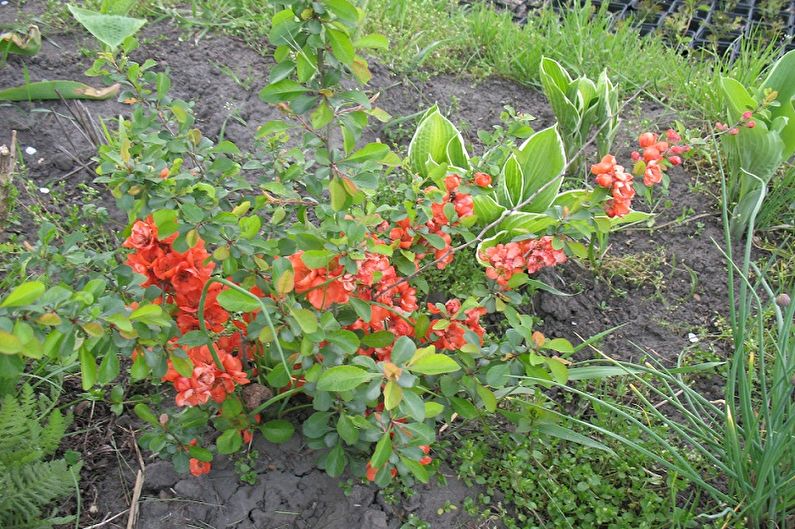
Propagation at home
Japanese quince is not difficult to propagate on its own. To increase the number of the variety you like, you can use one of four methods used in gardening. Each of them is endowed with its own advantages and disadvantages. Having familiarized with different technologies, you can choose the most suitable option.
Quince propagation by seeds
Sowing seeds can be called the most simple and reliable way. The material is not difficult to assemble yourself. When preparing ripe fruits for processing, the seeds must be removed from the core.The most favorable time for sowing Japanese quince is autumn, so the seeds can be planted in the ground without any treatment. If it is supposed to land at another time, they will need to be stratified, having stood for three months in raw sand at a temperature of + 3C. It is worth noting that Japanese quince seeds have a very high germination rate - up to 85%.
Sowing is carried out in a container with prepared soil. When planting in the autumn, young sprouts in the spring are transplanted into the open ground. If the seeds were sown in the spring, young plants are planted in the garden by autumn, but for wintering they are covered with foliage and spruce branches.
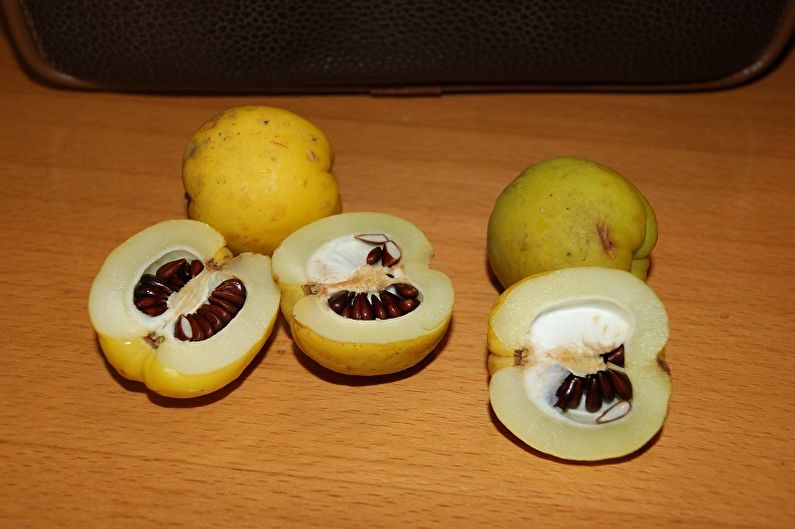

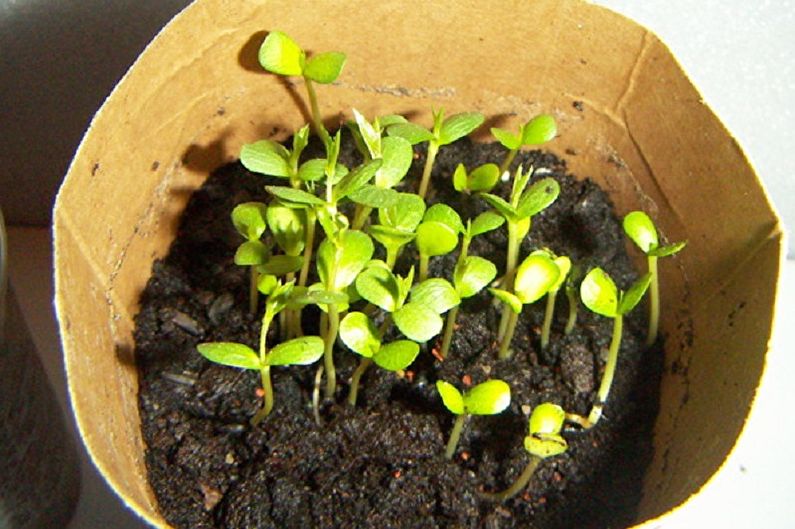
Quince propagation by cuttings
Using the cuttings method, varietal qualities can be maximally preserved. Pruning of cuttings must be carried out in early June, when dry, non-hot weather is established. Each segment should have a pair of internodes. It is better if the handle will have a small (up to 1 cm) sprout of last year's wood, which will ensure the reliability of rooting. When grafting, it is necessary to use a growth stimulator, in which the collected material is soaked before planting. It promotes fast and reliable rooting.
At the end of the preliminary preparation, Japanese quince cuttings are seated at an angle to a container with soil consisting of sand and peat. Rooting occurs after 5-6 weeks. At the same time, it is important that the air temperature is not lower than + 20C, so you can arrange a greenhouse by covering the landing with polyethylene or glass. After germination of the cuttings (in early autumn) they are planted in open ground.
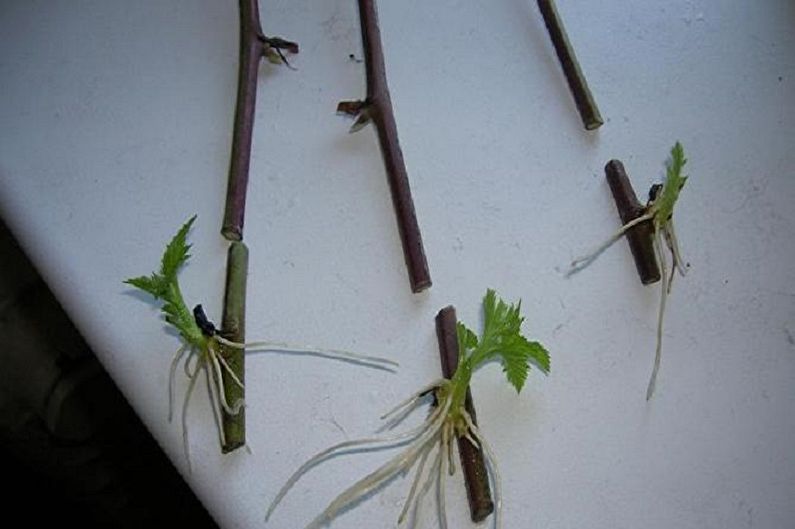
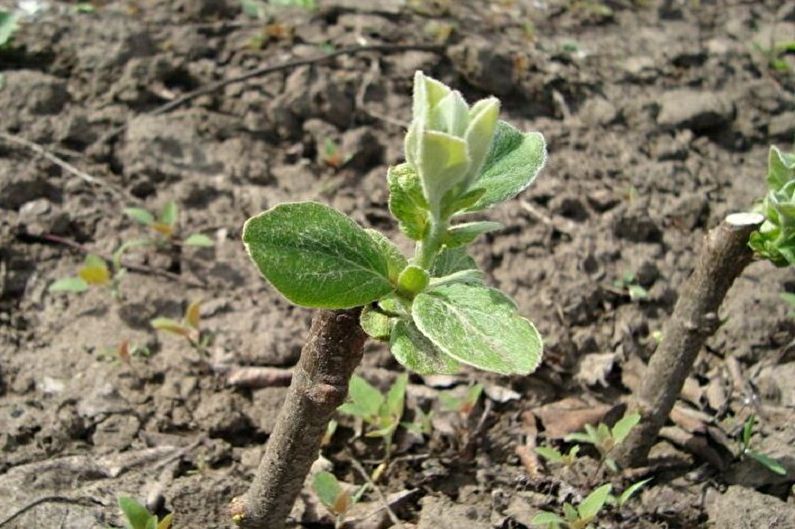
Quince propagation by layering
With this method of propagation in the lower part of the bush, long shoots are selected and, tilting them tightly to the ground, they are pinned. On top of it is necessary to pour a small layer of soil and pour plenty of water. Throughout the summer, the places of fixation of shoots must be carefully watered and spud. Transplanted plants are produced next spring.
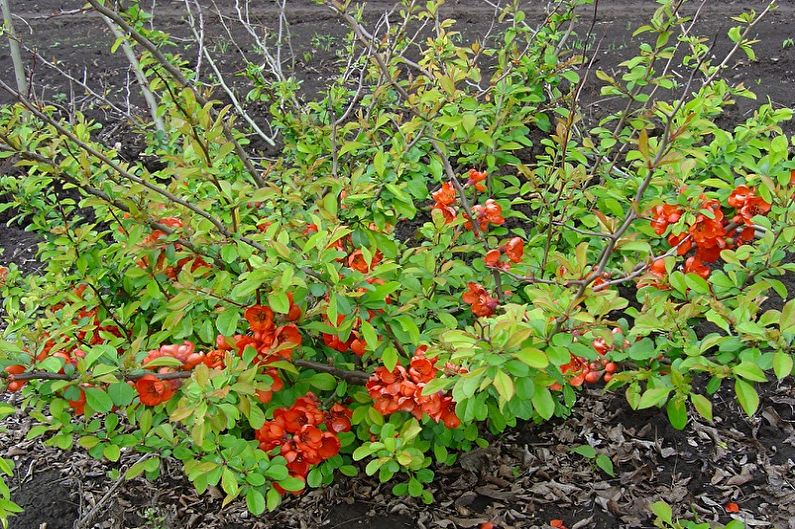
Quince reproduction by division
Japanese quince gives a lot of root offspring, so the bush often "sprawls" on its own in time in different directions. The ability of the root system to hold the ground firmly makes quince the most suitable plant for planting on slopes.
The magnificent growth of the roots of the bush can be used for reproduction. But this method has its drawbacks: often offspring do not take root well, and the first crop can disappoint with the small size of the fruit. But, despite this, the division of the bush is still used by gardeners. Separated parts must be planted vertically in prepared pits, watered and mulched with shavings in order to maintain sufficient soil moisture.
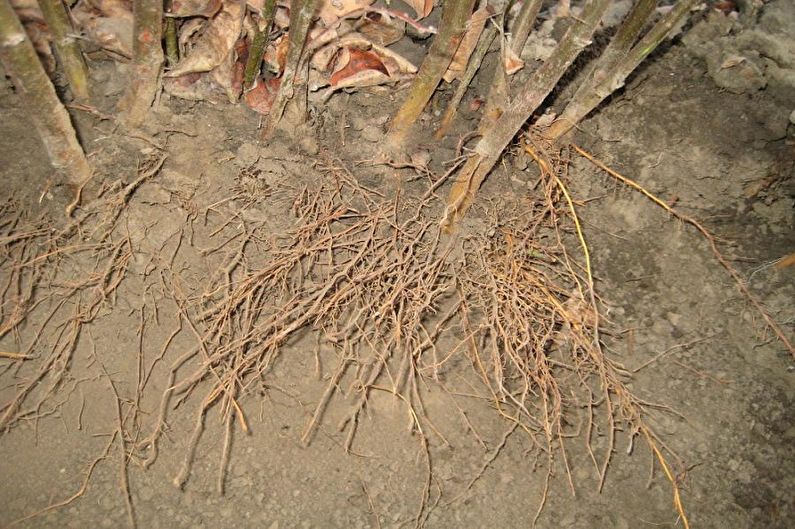

Japanese quince - photo
Japanese quince is widely used as a decorative and fruitful culture. Its popularity is due to the incomparable beauty of flowering and an abundant harvest of healthy fruits. Grown in single and group plantings, in curbs and lawns, it becomes a real decoration of any garden plot. We offer more details on the various types and varieties of plants in our photo selection. Perhaps soon this beautiful honey plant will bloom on your site. Enjoy watching!
